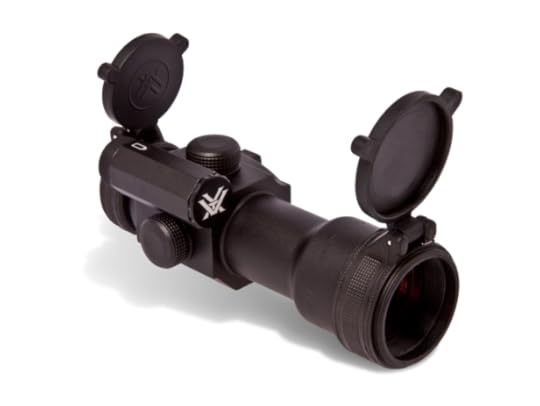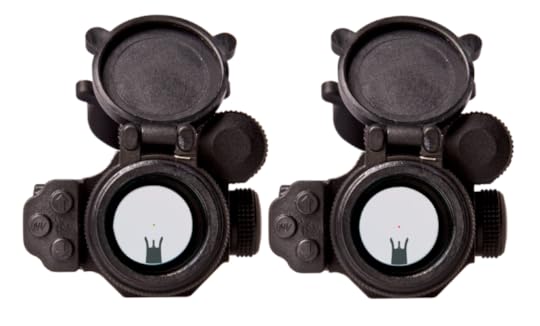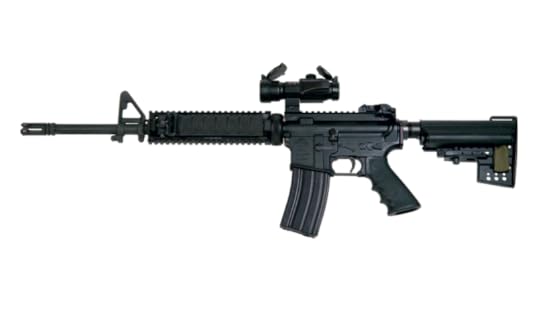Benjamin Sobieck's Blog, page 24
February 17, 2014
Kindle Deal: 12-Novel Bundle for 99 Cents
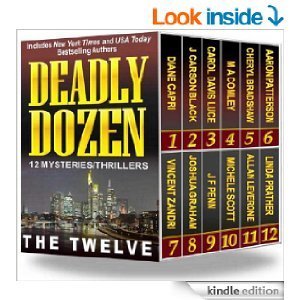 The Deadly Dozen collection, featuring 12 novels by 12 crime/thriller authors, is just 99 cents for Kindle as of this writing. I don't know how long the deal is going to last, but it's a hot one. These novels purchased separately would cost you $47.
The Deadly Dozen collection, featuring 12 novels by 12 crime/thriller authors, is just 99 cents for Kindle as of this writing. I don't know how long the deal is going to last, but it's a hot one. These novels purchased separately would cost you $47.
Here's the line up:
1 - DON'T KNOW JACK (The Hunt For Reacher Series) - Diane Capri2 - CRY WOLF (A Laura Cardinal Novella) - J Carson Black3 - NIGHT WIDOW (The Night Series) - Carol Davis Luce4 - GUARANTEED JUSTICE (The Justice Series) - M A Comley5 - STRANGER IN TOWN - Cheryl Bradshaw6 - BREAKING STEELE (A Sarah Steele Thriller) - Aaron Patterson & Ellie Ann7 - MOONLIGHT SONATA (A Dick Moonlight Thriller) - Vincent Zandri8 - TERMINUS - Joshua Graham9 - ONE DAY IN BUDAPEST - J F Penn10 - DEAD CELEB (The Dead Celeb Series) - Michele Scott11 - FINAL VECTOR - Allan Leverone12 - THE GIFTS (A Jacody Ives Mystery) - Linda S Prather
Hop to it. Click here to get the Deadly Dozen collection for 99 cents while the deal still lasts.
February 11, 2014
Who are the 12?
"The 12" are a dozen crime/thriller writers coming together for one collection. I got an advance peek at the books (read: a healthy injection of books into my e-reader), and this is one to watch. Check out the 12 here.
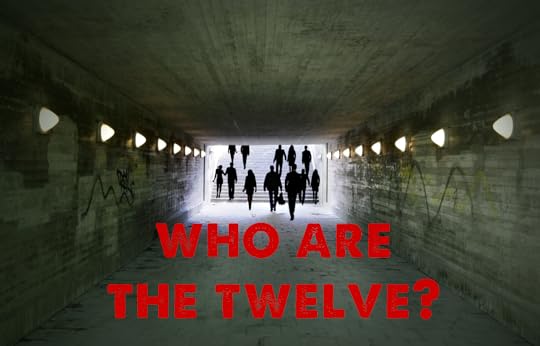
February 10, 2014
Review: Cry Wolf by J Carson Black
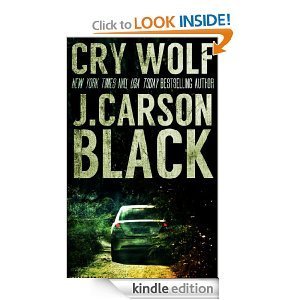 Cry Wolf by J. Carson Black is the fourth in the author's Laura Cardinal series, but it marked my first dive into these procedurals. It turned out to be a nice fit for waiting at a terminal for a flight to sunny weather. It's a brisk, short novel (novelette?) that's easy to pull in and out of while the gate changes for the 12th time.
Cry Wolf by J. Carson Black is the fourth in the author's Laura Cardinal series, but it marked my first dive into these procedurals. It turned out to be a nice fit for waiting at a terminal for a flight to sunny weather. It's a brisk, short novel (novelette?) that's easy to pull in and out of while the gate changes for the 12th time.
In this Cardinal caper, a pathological liar is found murdered in his vehicle on an Arizona back road. Our ghost whispering detective (she gets hints from the spirit of a dead partner, apparently explained elsewhere in the series) unwinds the events that led to the murder.
I usually read from the opposite spectrum of crime fiction - where action is favored over the "just the facts, ma'am" stuff. But Black writes an air of authority into each scene. I knew I wouldn't be rolling my eyes when the mystery cracked. And I didn't.
If quickie procedurals are your thing, this is your series. Go for it, slice.
February 9, 2014
Video Follow-Up: RIP Ammunition for Fiction?
Following up a recent post about the new, snazzy-looking R.I.P. ammunition that caught the attention of the writing community, here is a pair of test fire videos. My (and probably your) suspicions were correct: this isn't anything special. Stick with standard ammunition when writing fiction.
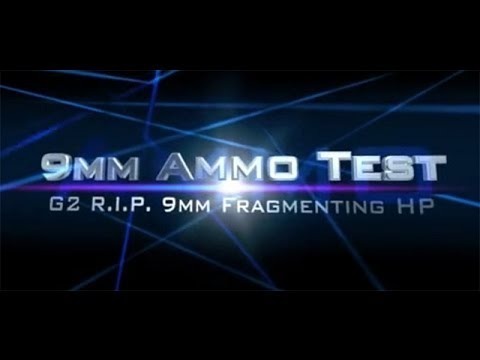
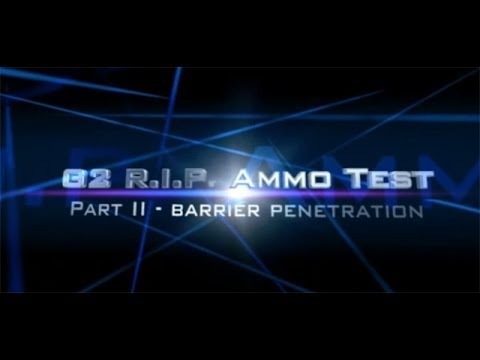
And just for S & G, here's one of the original promo videos:
February 1, 2014
Review: Killing Kate by Julie Kramer
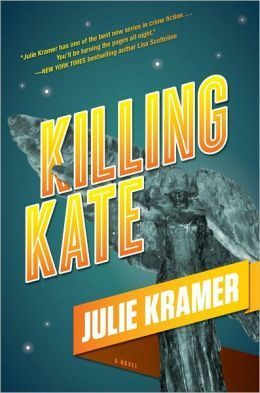 A murdered erotica writer with books of coded messages. An urban legend about a cursed angel statue in a cemetery. Chalk outlines of angels mysteriously appearing at crime scenes across the Midwest. What more could you want in a crime novel?
A murdered erotica writer with books of coded messages. An urban legend about a cursed angel statue in a cemetery. Chalk outlines of angels mysteriously appearing at crime scenes across the Midwest. What more could you want in a crime novel?
Julie Kramer delivers this and much more in her Minnesota-set Killing Kate crime novel. It's another in her series featuring TV journalist Riley Spartz.
I'd discovered Kramer through Delivering Death (there's that alliteration again that themes these titles), a crime novel that I thought packed all the right punches. Killing Kate was to be my confirmation that I could add author Kramer to my list of regular reads. (Note: Killing Kate comes before Delivering Death in the series, but reading out of order doesn't seem to mar the experience.)
Test passed. Killing Kate moves just as quickly and as smart as Delivering Death. The shift between third and first person POVs is there, as is a worthy adversary to match wits with Spartz.
I wanted so badly to give this five stars, but I'm going with four. Here's why.
Unlike Delivering Death, Kramer takes the wind out of her novel's sails by giving away the murderer early on in the novel. It's just a matter of time until the murderer and Spartz cross paths. We know it because Spartz is too smart not to put all the pieces together.
Watching Spartz do that is entertaining, but it felt dragged out. That there are B, C and D plots for Spartz to address just added to the wait.
Don't get me wrong. This formula (giving away the bad guy) can work if the suspense is cranked up. There seems to be an effort to do that, but Spartz's other commitments push the thrills to the background.
Even with this handicap, Kramer rescues the reader with her pure storytelling ability. If Spartz takes a few chapters to do a news story about a divorced couple fighting over a dead dog, the novel doesn't necessarily suffer. Kramer could make the ingredients list on a package of frozen waffles breathe to life.
That said, I'll continue reading Kramer and her Spartz series. They're easily my best find of 2014 so far.
Get Killing Kate at Amazon, Barnes & Noble or order it through your favorite independent bookseller.
January 30, 2014
Excellent Post About Firearms in Fiction
Kristen Lamb takes on a few common mistakes when depicting firearms in fiction today here. She offers some excellent tips, from Glocks to "clips." Check it out.
January 29, 2014
R.I.P. Ammunition: Worth it For Writing Fiction?
It's rare for something to go viral in both the firearms and crime writing worlds, but G2 Research's new R.I.P. (radically invasive projectile) ammunition managed to pull off just that. The writing front seems to be attracted to the ammunition's use in fiction.
Why? Just check out the promo video.
Looks pretty intense, huh? It's almost like G2 designed the R.I.P. for fiction. That's fitting, because right now that's where it belongs.
First thing's first, this ammunition hasn't hit shelves yet. Whether the claims the video makes can be lived up to isn't known.
What is known is this pesky thing called "physics." A bullet, just like any projectile, exerts kinetic energy onto a target upon impact. It's that energy transfer that causes damage.
If that bullet splits into two, a little high school science tells us that the kinetic energy in each half would be, well, half.
Keep it going. If the bullet splits into three, each third would contain a third of the original energy. Four pieces, a fourth, and on it goes.
But the R.I.P. allegedly sheds eight fragments from the bullet as it hits, for a total of nine pieces. Now that original kinetic energy - the thing that does the damage - is dispersed over nine pieces. So each piece inflicts roughly a ninth of the damage that the original single, solid projectile could.
Less kinetic energy per piece means less penetration to the target. Makes sense, right?
But the R.I.P. claims to plow through everything from concrete to plywood. That wouldn't seem to jive with our friend physics.
I could be wrong, but some of these claims seem a little exaggerated, better for getting people worked up. Until the product hits shelves, it's all hype right now. Words like "hole saw effect" and "defeat every major obstacle" make for flashy marketing and not much else. Being "effective against" plywood and cinder blocks doesn't mean much, either. Hammers are effective against those things, too. "The last round you'll ever need" errs toward sloganeering. The last round I needed was the not-so-jazzy .270 I used to put venison in the freezer.
What R.I.P. gets right - its ability to damage vital organs - isn't anything new. Projectiles have been penetrating vital organs since the spear-chuckin' days of 10,000 B.C.
It also gets the "nine wound channels" thing correct, since there are nine pieces causing nine separate wounds. But don't think that's anything special. It only takes one "wound channel" to get the job done.
I'm not trying to be an ammo hipster here, shrugging off innovation. This might be excellent ammunition. But as far as writing fiction goes, ignore the R.I.P. and stick with generic hollow-point bullets for characters' defensive ammunition. They explode upon impact, too, only they do a great job of not passing through targets. That's why they're often used for home defense firearms. You don't wind up using your neighbor's house as a backstop that way.
If you found this post interesting, be sure to sign up for my free e-newsletter. Watch for my Writer's Digest book on firearms and knives to hit shelves in late 2014.
January 21, 2014
Review: Delivering Death by Julie Kramer
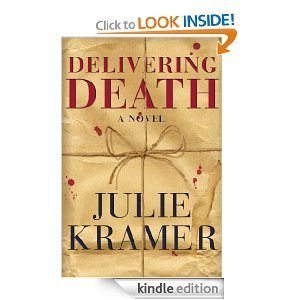 What is it about journalists turned crime novelists? I don't necessarily seek these people out, but my nose usually points me in their direction. Maybe it's because I'm trying to be the same thing. Maybe it's because I'm a hardcore news junkie, one of the print-paper-at-the-end-of-the-driveway-each-morning holdouts. Or maybe it's because there's a certain je ne sais quois to grounding fiction in reality, a guarantee that the bullshitting won't pull any punches.
What is it about journalists turned crime novelists? I don't necessarily seek these people out, but my nose usually points me in their direction. Maybe it's because I'm trying to be the same thing. Maybe it's because I'm a hardcore news junkie, one of the print-paper-at-the-end-of-the-driveway-each-morning holdouts. Or maybe it's because there's a certain je ne sais quois to grounding fiction in reality, a guarantee that the bullshitting won't pull any punches.
It was probably all of the above with Delivering Death by Julie Kramer, former head of WCCO-TV investigative news unit and current freelance network news producer. That Kramer is a Minnesotan like me was too much to resist. I had to read her latest novel.
I could go on and on about the Minnesotan references - from a well-known caramel roll pit stop off Interstate 35 all the way to the beta readers who freelance for the Star Tribune in her acknowledgements - but I doubt it would entertain anyone but me. Because what is entertaining is this crime novel. I couldn't recommend it more.
In Delivering Death, TV investigative journalist Riley Spartz (a little art imitating reality) receives a package full of teeth. Whom they belong to, and how they relate to a well-known Minnesota fraudster serving time in prison (loosely based on either Denny Hecker or Tom Petters, I suspect), makes for a fast-paced A plot.
Still, much of the novel focuses elsewhere. The B plots involve other stories Spartz chases, a mass marriage at the Mall of America, missing dogs, an ex she must turn to as a source and a TV news director sacrificing quality for cheap entertainment during sweeps.
Much as she likely did in real life, Kramer balances each without losing the reader. The writing is crisp, the chapters quick and the plot deceivingly smart. Kramer lobs a few softball homeruns for readers to run the bases with, but clears the floor with a couple bombshells no one will see coming.
However, as my old journalism mentor would say, the "story is done when it's done." I thought the story ended when the A plot wrapped up, but the book kept going for a jaunt to the Mall of America. It felt tacked on to fill pages, but forgivable in light of Delivering Death's other strengths.
One other point, this time about nuts and bolts writing. Delivering Death shifts between first and third person points of view. That's something I pull in my WIP crime novel, and hadn't seen it done before now. Honestly, I was worried that format would throw off would-be readers. But seeing Kramer pull it off so effortlessly - sometimes even within a single chapter - is enough verification to me.
Kramer made a fan out of me with Delivering Death. I can't wait to dive into her other novels. She's my kind of crime writer. You'd do well to be her kind of crime reader.
January 20, 2014
Magazine vs. Clip: What's the Difference?
Magazine or clip? Many writers, and people in general, trip up on this area. And they almost always reference the wrong one - "clip" - to describe that detachable rectangle that holds ammunition.
It's OK. I even made that mistake myself in one of the earlier versions of Cleansing Eden, my crime thriller novel. Correcting that mistake was part of the catalyst for my Writer's Digest guide to firearms and knives, out later this year.
Here's the rule of thumb: 99 percent of the time, the correct term is "magazine," not "clip."
What's the difference? Let's start with appearances. A magazine looks like this. (image courtesy of GunDigestStore.com)
[image error]
A magazine feeds ammunition into the firearm. Keep that in mind, because it's an important distinction.
A clip is different in that it inserts ammunition into a magazine, usually an internal one built into the firearm but sometimes a detachable one. The clip feeds the magazine, and the magazine feeds the firearm. That's the major difference. Here's what a clip looks like. (Wikimedia image)

Clips are relatively uncommon today. Most modern pistols and rifles use magazines - either internal or detachable - without the need for clips. By the way, revolvers don't use magazines or clips. They have cylinders that are loaded either by hand, a speed loader or a speed strip. That's a post for another day.
Maybe a writer is looking at a particular firearm and wondering if it uses the exception - clips - or the rule - magazines. Here's an easy way to remember. If the ammunition is exposed, it's probably a clip. If the ammunition is hidden, it's probably a magazine.
If you have any questions about differences between magazines and clips, feel free to leave a comment below. And be sure to pick up my Writer's Digest guide to firearms and knives when it hit shelves in late 2014.
Did you find this article helpful? Sign up for my free e-newsletter and I'll send more tips about firearms and knives straight to your inbox.
January 15, 2014
Gun Laser Sights vs. Red Dot Sights: Is There a Difference?
Nothing says "you're screwed" like an electric viper pit of red lasers snaking across a character's body in fiction. These beams of light preview right where a shot would hit, a reminder of the few seconds the character may have left to live.
It's a nice effect for writing showdown scenes between the damned and double damned, but what exactly are these devices called?
Would it sound facetious if I said they were just called "laser sights?" I can't skirt reality, that's really what they're called.
Here's what a Crimson Trace CMR-201 Rail Master, one of the best laser sights on the market in my opinion, looks like mounted on a handgun. (image courtesy of GunDigestStore.com, and used with permission)
Laser sights project a beam onto a target. This helps the shooter's accuracy in low-light conditions.
However, some stories I've read call them "laser scopes" or "red dot sights." Both would be incorrect.
"Laser scopes" doesn't work because such a thing doesn't exist. "Scope" is just short for "telescope," meaning, well, what you think it means. Scopes use a telescoping lens that magnifies targets. Laser sights don't magnify anything. They just shoot lasers. They're "laser sights," not "laser scopes."
"Red dot sights" doesn't work, either, although I can see how it trips some writers up. Laser sights project red dots onto targets.
But red dot sights are actually completely different things. Here's what one looks like. This is a Vortex StrikeFire. (GunDigestStore.com image)
It's also used for aiming, but it works much differently than a laser sight. It doesn't project laser beams at all. It's mounted to the top of a firearm, where you might expect a scope to be attached. The shooter looks through the red dot sight to aim. But instead of the classic crosshairs, the shooter sees a red dot.
That red dot is usually powered by batteries, but some models use fiber optics instead. Here's what it'd look like if you stuck an eye next to the battery-powered StrikeFire. A green dot version is on the left, and the red dot model is on the right.
And here's what the StrikeFire looks like mounted to a firearm.
That's quite a bit different than the Crimson Trace laser sight shown here.
So a character in fiction covered in red dots isn't being targeted by red dot sights. He's being targeted by laser sights. And he's still screwed.
Here are some other fast facts.
The pattern the shooter sees when looking through a scope, such as the classic crosshairs, is called a reticleYou can find a lot more about these devices in my Writer's Digest guide to firearms and knives in fiction, hitting shelves in late 2014Sign up for my newsletter for more tips like this one


